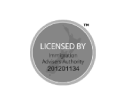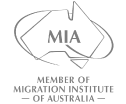Australia’s world-class education system consistently ranks among the global top 20, making it a critical consideration for skilled professionals pursuing General Skilled Migration visas. With all states guaranteeing access to public schools for migrant children, families can prioritize career transitions while ensuring educational continuity. This deep dive explores how Australia’s educational infrastructure supports GSM visa holders through targeted policies, regional opportunities, and integration programs.
Australia’s Education System for Skilled Migrant Families
Public School Access
Children of GSM visa holders receive tuition-free access to public schools from primary through secondary levels (Years K-12). Key benefits include:
- No tuition fees for compulsory education years (varies slightly by state)
- Multicultural classrooms with 42% of students speaking languages other than English at home
- Specialist transition programs helping international students adapt to Australian curricula
South Australia’s Skilled Migration Program actively promotes public school access as part of its regional workforce development strategy, offering dedicated liaison officers to help families navigate enrollment.
Curriculum Integration
Australia’s curriculum framework allows flexible pathways for students transitioning from international systems:
- Credit transfers for completed secondary school qualifications
- English as an Additional Language (EAL) support in 94% of public schools
- STEM-intensive programs aligning with Australia’s priority skills sectors
In Victoria, migrant students achieved a 92% Year 12 completion rate in 2024, outperforming the national average by 7 percentage points.
Regional Education Advantages
Cost-Saving Opportunities
Families settling in regional areas through programs like the Subclass 491 visa benefit from:
- 30-45% lower living costs compared to Sydney/Melbourne
- Smaller class sizes (average 18 students vs 24 in cities)
- Priority enrollment in specialized agricultural, engineering, and trades schools
Western Australia’s Goldfields region offers mining scholarships for high school students linked to parent employment in critical resources sectors.
State-Specific Incentives
| State | Program | Benefit |
|---|---|---|
| South Australia | Education Migration Partnership | Free after-school tutoring for first-year migrant students |
| Queensland | Skilled Families Initiative | 50% discount on school transportation passes |
| Tasmania | Regional Textbook Scheme | Annual $300 allowance for learning materials |
Enrollment Process Essentials
Documentation Checklist
- Valid GSM visa grant notice
- Proof of local residential address
- Immunization records translated into English
- Previous school transcripts with certified translations
Pro Tip: Initiate enrollment inquiries 6-8 months before relocation through state education department portals.
Support Systems for New Families
Cultural Navigation Programs
- Buddy systems pairing migrant students with local peers
- Parent workshops on curriculum navigation and tertiary pathways
- Multilingual mental health counselors in 78% of metropolitan schools
Melbourne’s New Arrivals Excellence Program reports 89% participant satisfaction for its parent-student orientation camps.
Challenges and Mitigation Strategies
- Metropolitan Waiting Lists
Top-tier schools in Sydney/Melbourne may have 12-18 month wait periods. Solution: Apply for multiple catchment areas and consider temporary private schooling. - University Pathway Planning
The ATAR (university entrance) system rewards early subject selection. Engage school career advisors by Year 9 to optimize course choices. - Special Needs Support
Australia’s Disability Standards for Education apply to all visa holders. Expect 6-8 week assessment periods for individualized learning plans.
Australia’s education-leveraged migration strategy creates virtuous cycles – skilled parents fill critical workforce gaps while their children develop into tomorrow’s bilingual, bicultural professionals. By aligning school selection with regional development priorities and early integration planning, families transform educational access into long-term socioeconomic stability.










